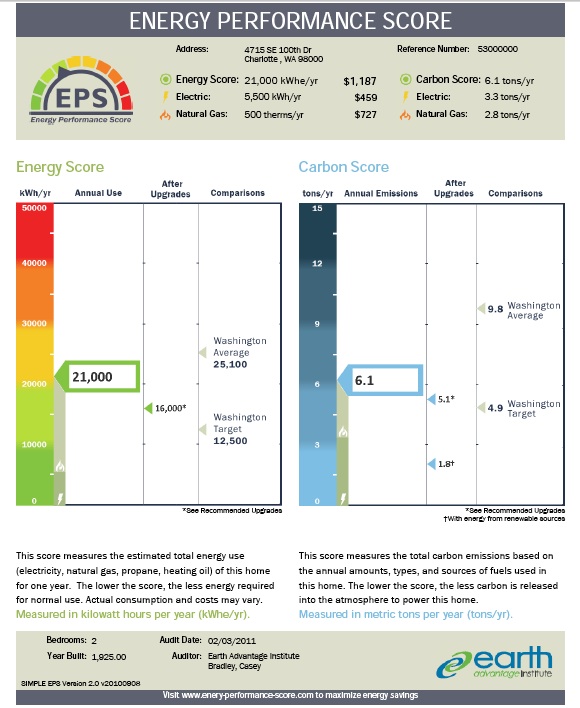
Image Credit: Earth Advantage Institute
Rating the performance of a Passivhaus-certified home using the Home Energy Rating (HERS) Index or another rating system might seem like topping a sundae with a cherry: it’s okay to add the ornament, but it really doesn’t make the sundae any better.
The reality, though, is that Passive House Institute U.S. is looking for ways to help market the Passivhaus standard, and having certified homes audited and rated by other organizations appears to be part of the strategy. It’s more than topping the sundae with a cherry, it’s adding sprinkles, nuts, and shredded coconut too.
In February, PHIUS announced an agreement with energy-audit specialist Residential Energy Services Network (RESNET) to assign HERS Index ratings to all Passivhaus buildings, and on Monday PHIUS announced that it will help develop a “mileage sticker” based on the Energy Performance Score (EPS) rating system created by Earth Advantage Institute, a nonprofit green building organization based in Portland, Oregon.
A performance comparison
While the HERS Index measures the performance of a house relative to that of hypothetical home built to the specifications of the 2006 International Energy Conservation Code, the EPS system compares the audit home’s energy consumption and carbon emissions with those of a comparably sized home that has been audited in the same climate zone. Data from a blower-door test, combined with an analysis of the home’s insulation system and its fuel costs for heating, cooling, water heating, lights and appliances, is used to calculate the building’s total annual energy use in kilowatt-hours. So far, Earth Advantage Institute says, it has certified more than 11,000 homes, mostly in the Northwest.
It’s hard to imagine that projects certified to the Passivhaus standard, whose requirements for airtightness, insulation, and window performance are the most stringent in the construction industry, will have much trouble besting every comparable home in the region, except maybe other Passivhaus buildings. But that’s the point.
“The massive energy savings offered by Passive House certification have attracted significant attention in the Northwest and in other parts of the country,” Sean Penrith, executive director of Earth Advantage Institute, said in a press release. “With Earth Advantage Institute’s ability to reach the builder and homeowner communities, this agreement with PHIUS enables both parties to bring a much higher level of residential energy performance into the mainstream.”
Weekly Newsletter
Get building science and energy efficiency advice, plus special offers, in your inbox.














One Comment
Prescriptive vs. Performance
I don't see how this alliance will benefit the Passivhaus Institute. Once a few passivhauses get their EPS rating, a builder can just shoot for the same EPS rating per square foot, and skip Passivhaus certification altogether.
Log in or create an account to post a comment.
Sign up Log in